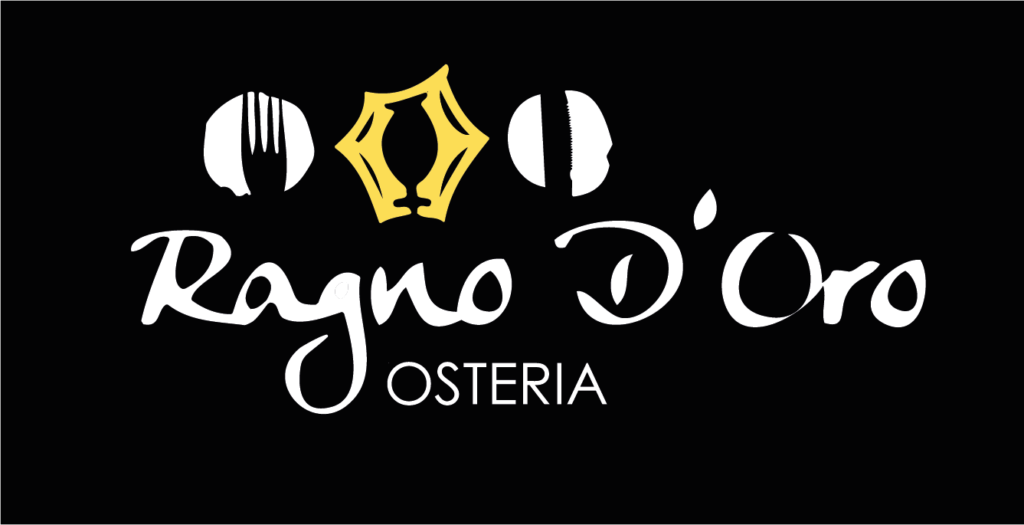Easter desserts in Rome and Lazio

The joyful Easter season is approaching and along with it, tables are filled with delicacies. In this article we will take a look at the Easter sweets in Rome and Lazio, which have always added flavour and colour to this important holiday, making it even more magical and characteristic. Sweet Roman pizza Also better known as pizza cresciuta, this is not a real pizza, but a tall, fluffy cake, the preparation of which takes at least two days and a lot of patience. Also present in its salty version, in this section we will focus on describing the sweet version, with its special cinnamon flavour and the presence of candied citrus fruits. Each family, however, has its own special trick up its sleeve in the preparation of this typical Latium dish, in fact in some of its versions we can find anise seeds, nutmeg and/or liqueurs such as alchermes or maraschino. In all its variations, however, it remains a much-loved and essential dessert during this festive season. Pizza sbattuta We now proceed to the second sweet pizza typical of the Roman area, but again this is not a real pizza. Pizza sbattuta takes its name from its preparation, in fact it is a very soft and light cake without the use of yeast, perfect to be combined with sweet creams or chocolate Easter eggs. To give it its shape, it is necessary to beat the eggs and sugar together for a long time, at least an hour, in order to obtain a foamy and light mixture to which a bit of lemon peel and icing sugar is usually added to finish it off nicely. Easter Tortano It is a variant of the Easter cake from the lower Lazio region, decorated on the outside with an egg white and sugar-based icing called “naspro”, decorated according to personal preferences with coloured sprinkles and sugared candies. Tortano is a cake that has been left to rise for hours and, except for the icing, it is not very sweet. In fact, the characteristic flavour is given by the presence of anise seeds in the mixture and the use of liqueur. It is also available in its variant with a typical ring-shaped cake called tortero di Lenola, to which the outer sprinkles are usually not added. Pasqualina cake Whereas towards Anagni we find the pasqualina cake, which looks similar to a filled tart: this typical dessert from Ciociaria has a fragrant outer crust and a soft filling of ricotta, rum and alchermes. In conclusion, when Easter approaches, Lazio is overwhelmed by the flavours and aromas of these delicious sweets, an integral part of tradition. In fact, those we have listed in this article are only some of the most popular, but we invite you to explore this region rich in history and culture to discover other variants, similar in ingredients but different in shape and history.
March vegetables
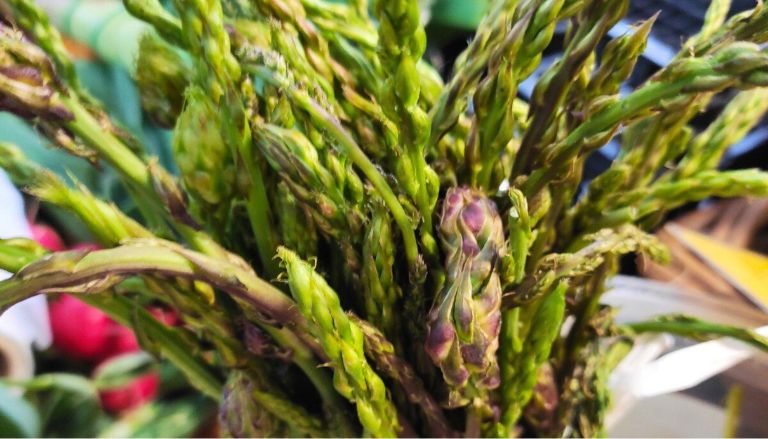
Spring is coming and it brings with it a delightful air of change, which is also reflected in the choice of primary ingredients. In this article we are going to look at which vegetables are in March and how they can be used in the kitchen. Artichokes Popular in Roman cuisine, artichokes are among the leading protagonists of this season. With their unique taste, they possess many beneficial effects for different areas of the human body. They are in fact rich in fiber and contribute to intestinal regularity by helping digestion. In addition they contain potassium, support cardiovascular health and strengthen the immune system thanks to the presence of vitamins A, B and C and K. Versatile and tasty, we find them in many recipes and in Rome you cannot miss trying their famous variant “alla Giudia” which involves crispy frying, making them perfect both as an appetizer and as a vegetable side dish or second course. To find out more about the importance of this vegetable in Roman tradition read our dedicated article! Asparagus Rich in water, vitamins A, C and E and minerals, low in fat and cholesterol-free, asparagus makes its way into spring, ready more than ever to spice up many of your dishes. As well as their cousins artichokes, they are a food you should introduce into your diet for the many benefits they are able to bring to your health. As mentioned earlier, this vegetable has an important diuretic power that makes it particularly recommended for those who suffer from high blood pressure and heart problems; it is also very important for muscle health and helps to fight the development of cellulite. In Rome, asparagus is an essential ingredient for the proper success of Vignarola Romana: it is a typical dish made with fresh vegetables among which we also find the previously mentioned artichokes, along with broad beans, peas and Roman lettuce. For those who love strong flavors, it is possible to enrich it with pork cheek and a splash of wine. This recipe is perfect as a side dish, main course or also lends itself well as a good condiment for pasta. Bitter vegetables Seasonal vegetables also include bitter ones, such as chicory or puntarelle. These carry with them a considerable amount of beneficial properties: they are useful for regulating blood sugar levels, in digestion and against constipation, essential for proper liver function, strengthen the immune system and are rich in vitamins, minerals and antioxidants. But how do they perform in the kitchen? Bitter spring vegetables are ideal as a side dish, lightly tossed in a frying pan or grilled with a drop of oil that can enhance their unique and sharp taste, but you can find them in many recipes or in combination with other raw materials as it happens with anchovies in the case of the typical Roman salad of puntarelle. We are waiting for you every day at Ragno D’Oro where you can taste some of these recipes that we daily prepare with all the love and care expected from traditional Roman cuisine. Contact us now to reserve your table!
Carnival in the Roman tradition
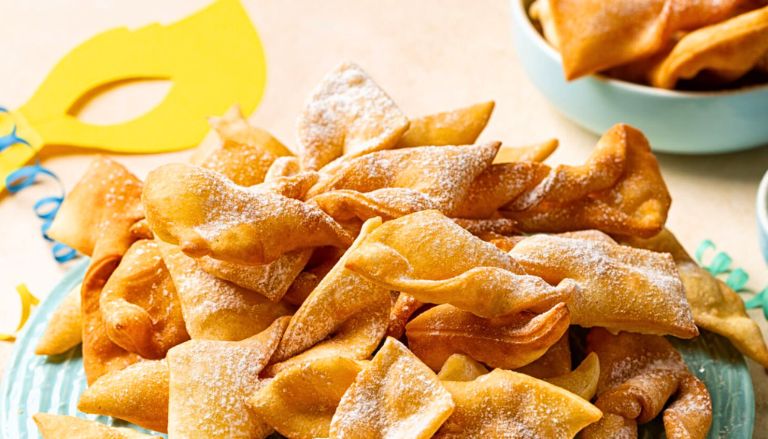
We are now in the most cheerful time of the year with costumes, festoons and confetti populating the squares and filling them with colour, while mouth-watering dishes fill the tables of Italians. In this article we will talk about Carnival in the Roman culinary tradition, so get ready for plenty of sweets with frappe, castagnole and ravioli! Frappe Fried or baked, frappes are crispy golden strips covered with powdered sugar. You can find them either plain or flavoured with vanilla or various liquors and covered in chocolate for the sweet-toothed. Today, they are considered the descendants of the ancient Roman frictilia, typical sweets fried in pork grease, which were distributed in the streets on the occasion of Saturnalia, when people celebrated gluttony and the abundance of the earth. Castagnole Also available in both a fried version and a lighter oven-baked variant, castagnole are the ultimate sweet when it comes to Roman Carnival. Their shape is reminiscent of chestnuts, from which they take their name, but they are balls of baked dough covered in granulated sugar. There are ones for all tastes, in fact you can enjoy them plain or filled with cream, ricotta or chocolate. Ravioli Last, but not least in terms of goodness, we find ravioli. Similar in shape to the famous pasta, but don’t be fooled: these are real desserts! Fried or baked, their strength is their filling, which in the most traditional versions includes chocolate, ricotta or even cinnamon, although today there are many variations, such as cream-flavoured or fruit jams. Now that we have told you about these delicacies, don’t waste any time and hurry up and taste them while they are available! For a dive into traditional Roman cuisine, we are waiting for you every day at Ragno D’Oro in Via Silla 26, 00192 Rome. Call us on 06 321 2362 to reserve a table or use the form on our website.
Jubilee 2025: Rome renews itself to welcome the world
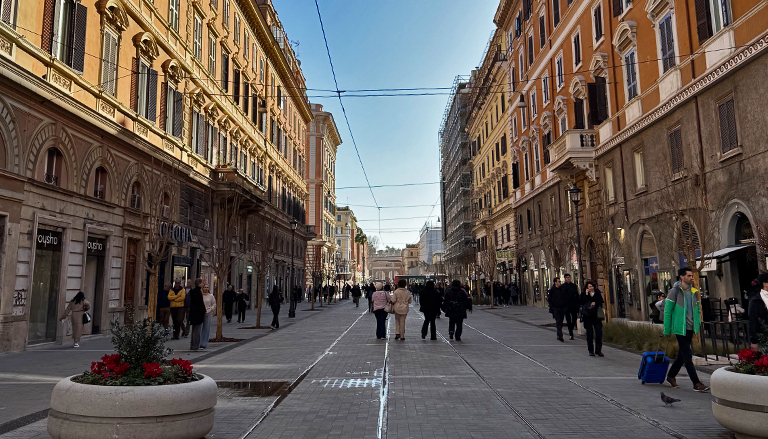
As the Jubilee 2025 approaches, Rome has engaged in a transformation to accommodate the millions of expected peregrines and tourists. Urban renewal works have been completed in several strategic areas of the city, making the Capital more livable, accessible and sustainable. Among the most significant works are the pedestrianization of Ottaviano Street and Risorgimento Square, which now offer large spaces for walking, new green areas and modern street furnitures. In addition, Pia Square has been transformed into a vast walkable plaza connecting Sant’Angelo Castle to San Pietro, giving visitors an environment of extraordinary historical and architectural beauty. The city has also improved public transportation and accessibility for walkers with new sidewalks and infrastructure to break down architectural barriers, promoting sustainable mobility. These measures are part of a larger project that aims to enhance Rome’s historical and cultural heritage, integrating it with modern needs for livability and sustainability. Osteria Ragno d’Oro in the heart of the renovated Prati district In the heart of the Prati district, just a short walk from Ottaviano Street and San Pietro, Osteria Ragno d’Oro is the ideal place to immerse yourself in the traditional Roman tastes before or after a walk through the city’s artworks. Our inn offers a warm and welcoming atmosphere, perfect for families, groups of friends or tourists who desire to enjoy iconic dishes of local cuisine, such as amatriciana, saltimbocca roman-style and many other specialties. Thanks to its strategic position, the osteria is easily accessible to tourists and Romans who want to enjoy the vibrancy of a district that is now more beautiful than ever. Our staff is ready to make you feel at home, with caring service and dishes that celebrate Roman cuisine in all its authenticity. Stop by and visit us at Via Silla 26, or make a reservation at 06 321 2362. We are looking forward to an unforgettable gastronomic experience together, in the heart of Jubilee 2025 Rome!
Roman Christmas dishes: how to find them in tradition

Christmas is approaching and, like every year, it is a good tradition to spend these moments with the family, in front of a large table set to the right order, surrounded by bingo, laughter and relatives. In Rome, there is a long tradition of culinary delicacies that just can’t be missed, and although there are now many reinterpretations, these origins still hold strong roots in many homes. In this article we will tell you about the inimitable Christmas dishes of the Roman tradition, get ready to have your mouth watering! Christmas Eve dinner According to tradition, meat is abolished on 24 December, but fear not: Roman cuisine still provides excellent fish and vegetable dishes for the occasion. Starting with the appetisers, you cannot miss the fried food, usually broccoli and artichokes, elements that are present in every variation in Roman dishes, while for fish we find fried squid and sometimes also shrimps (often presented as a second course) and fried cod. A typical and must-have dish is then the broth of arzilla with pasta and broccoli: a fish that is not so frequently used but is nevertheless much appreciated in this hot, full-bodied and tasty meal, able to please young and old alike. This is followed as a first course by a nice plate of spaghetti with clams. As a side dish, puntarelle salad with a dressing of garlic, oil and anchovy fillets, which make this vegetable particularly popular and suitable as an accompaniment to the above-mentioned dishes, or for those who still have room for something less light, mashed broccoletti and chicory are always a good option. Christmas lunch There is only one serving that can open the dances for lunch on 25 December: stracciatella. Definitely not an ice-cream flavour, it is rather a meat broth (usually chicken) with scrambled egg, pepper, salt, Parmesan cheese, nutmeg and lemon zest that gives it a unique, spiced flavour. First courses include baked cannelloni stuffed with meat or ricotta and spinach according to preference, lasagne or home-made egg fettuccine with meat sauce. A second course that absolutely cannot be missed is fried lamb ribs, or alternatively, for those who want to reduce the amount of fried food, lamb ‘allo scottadito’ with a side dish of baked potatoes. Christmas desserts Did you think this was the end? Clearly not, and we certainly couldn’t leave out the desserts. Among the oldest are pangiallo, which finds its origins in Ancient Rome and more precisely during the Imperial Age. It is made from a mixture of dried fruit, honey and candied citron, orange and lemon peel, which is then baked and covered with a layer of batter. Then there is similarly the panpepato, also made from dried fruit, orange and the addition of cocoa, or for lovers of dry biscuits the Roman tozzetti, similar to cantucci, made from dried fruit and various spices such as cinnamon. Christmas without good food on the table is definitely not the same, having the chance to enjoy these delights surrounded by the warmth of affection is what contributes to making this holiday so magical. We hope we have inspired you with these Roman Christmas dishes!
Ragù: how to find it in Roman dishes

Italian meat ragù is certainly one of the most beloved dishes of the Italian culinary tradition, easily associated with the warmth of home and a Sunday lunch with the family. From the Bolognese one, to the Neapolitan one, to the Apulian one, there are many regional variants that still preserve the core, consisting of meat cooked for many hours in tomato sauce. Origins The etymology of the term comes from the French word ragoût, meaning a medieval dish of stewed meat, originally used as an accompaniment to other dishes. Brought to Italy around 1300 with the proclamation of the Pope from Avignon to the Vatican, the dish was later assimilated and revisited into the recipe known to us today, becoming principally a condiment for various types of pasta. The first variant was the Neapolitan one, made in 1773 by Vincenzo Corrado, which however was still influenced by the French, making it more similar to a stew or braised meat; therefore the real origin of what we are familiar with today is attributed to the Bolognese version of 1891, formalised by the first recipe written by Pellegrino Artusi, which included ingredients such as: veal, celery, onion, carrot, pork belly, the addition of broth during cooking and sometimes milk. It was only in the first decade of the 20th century, however, that we got to the current recipe with the introduction of tomato sauce as an essential ingredient, wine blending and the replacement of macaroni with tagliatelle. Ragù in Roman cuisine Today, almost every region of the peninsula boasts its own reinterpretations and different applications of the iconic ragù, and our beloved capital is certainly no different. In this article we will tell you about three Roman dishes that pay homage to meat sauce in a decidedly original way that is faithful to tradition. Rigatoni with oxtail in tomato sauce Originally a poor and popular dish, today oxtail is to all intents and purposes part of the most typical Roman cuisine and is something you absolutely must try if you really want to immerse yourself in the flavours of tradition. Similar to the classic ragù, in order to acquire tenderness, the tail meat is left to cook in a tomato sauce seasoned with ingredients such as celery and cloves, for about six hours. The accompaniment to rigatoni is perfect, as this typical type of Roman pasta is particularly suitable for thick, full-bodied sauces, and a sprinkling of pecorino cheese with an intense, pungent flavour is used to finish it off. Lasagna Roman style Another perfect recipe for a Sunday lunch with the family, we reveal however that there is not just one way to prepare lasagna, as in Rome there is an entirely typical recipe (and it is still delicious). Forget the béchamel sauce, in this recipe it is the mozzarella cheese that takes its place and the sauce is richer in tomato, while the meat ragù remains one of the key elements to make this dish a true delicacy, consisting of: minced meat, onion, celery, carrot, tomato sauce, oil and salt. Supplì Not to be mistaken for arancine, the Roman supplì is an iconic elongated, fried rice ball, a perfect street food or appetiser. Again, its name originates from surprise, a term often exclaimed by French soldiers during the Napoleonic occupation at the end of the 18th century, who, after the first bite, were captivated by the discovery of its stringy filling, hidden by the crispy external breadcrumbs: composed of rice, mozzarella cheese and, of course, our star ragù sauce. Immerse yourself in tradition If we have impressed you with these traditional delicacies then we invite you to try some of these dishes, and many more, at Ragno D’Oro in Via Silla, 26 (RM). Contact us now to book your table!
Saint Martin’s Summer: between traditions and flavors

Every year, on November 11th, Rome celebrates a tradition that has deep roots in the past: the harvest and the new wine, which on this date begins to be uncorked and shared in the city’s taverns. The Feast of Saint Martin, patron saint of farmers and winemakers, is not only a religious celebration but also a chance to enjoy the beauty of the city in an autumn setting where tradition, good food, and an unexpected warmth for the season mix together. With a clear blue sky, temperatures hovering around 68°F , and the inviting scent of roasted chestnuts filling the streets of the capital, Romans are ready to enjoy as better as they can the pleasant weather before the cold sets in. Why is it called “Saint Martin’s Summer”? “Saint Martin’s Summer lasts three days and a little bit more.” (Italian proverb) Among the most famous stories about the figure of Saint Martin, one of the best-known is that of “Saint Martin’s Summer.” According to legend, Saint Martin was traveling through Gaul on a particularly cold and stormy day. As he was near the city of Amiens, he came across a beggar who was shivering from the cold. Seeing the man’s suffering, Martin, who at the time was a Roman soldier, decided to tear his cloak in half and cover the poor man. This sudden act of generosity changed the fate of both: as soon as he shared his cloak with the beggar, the storm calmed, the rain stopped, and the sky cleared, making way for a ray of sunshine that warmed the surroundings. Thus, November 11th has become symbolically connected to the joy of a final celebration before the arrival of winter, marking the end of a cycle. The festivals, fairs, and celebrations in honor of Saint Martin are moments of sharing, tied to the nice weather that encourages outdoor activities and participation. What to do in Rome? “At Saint Martin’s, every grape must turns into wine.” (ancient Italian proverb) A visit to the Vatican can be the highlight of a day spent exploring Rome. After marveling at the majesty of St. Peter’s Basilica, you can wander through the streets of Borgo and immerse yourself in the historic, centuries-old charm of papal Rome. While St. Peter’s represents spirituality, the Vatican Museums are a testament to artistic wealth. With one of the most prestigious art collections in the world, the museums house works ranging from ancient art to Renaissance masterpieces, from Egyptian artifacts to Roman sculptures. Authentic flavors are one of the most important part of the journey: at the heart of our tavern, every dish tells the story of Rome, but the experience becomes even richer when the dishes are paired with local wines that enhance each course. What better way to celebrate Saint Martin’s Day? We invite you to explore our wine list, perfect for pairing with the traditional dishes of our heritage. Wine is not just a drink, but a journey that completes and enriches every dish! Come visit us, book your table, and make your day unforgettable!
Artichokes in roman cuisine
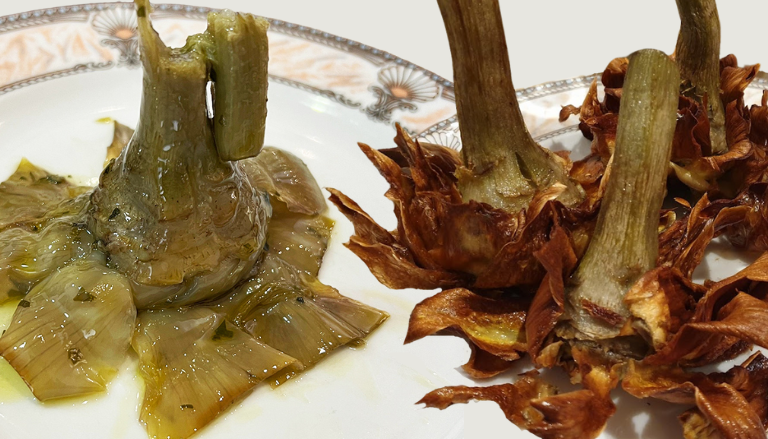
When it comes to Roman cuisine, artichokes hold a place of honor due to their versatility and unmistakable flavor. Two of the most iconic preparations are artichokes alla giudia (carciofi alla giudia) and artichokes alla romana (carciofi alla romana). These dishes can be enjoyed all year round thanks to the different varieties of artichokes: single-crop varieties, which bloom in spring, and reflowering varieties, available from October until May. The two recipes, symbols of Roman tradition, differ in both preparation and history. Artichokes alla giudia, crispy thanks to double frying, are a dish rooted in the long Jewish-Roman tradition, originating in the heart of the Ghetto in the 16th century. Artichokes alla romana are stuffed with a mixture of herbs and cooked slowly, representing the authenticity of Lazio’s rustic cuisine. In this article, we will explore the unique characteristics of these two specialties, analyzing the ingredients, cooking methods, and historical details that make them authentic symbols of Roman gastronomy. Artichokes alla giudia: a Jewish-Roman tradition Artichokes alla giudia are a symbol of the Jewish-Roman tradition. Originating in the Jewish ghetto of Rome, housewives prepared them as a festive dish to break the fast of Yom Kippur. The artichokes have deep roots in this culture. Thanks to their seasonal availability in spring, they have become a classic dish for Passover (Pesach) and, over time, a delicacy appreciated well beyond the borders of the ghetto, winning the hearts of all Romans. Carefully cleaned and shaped into a “rose,” the artichokes are dipped in a solution of water and lemon to preserve their vibrant color. They are then fried in abundant extra virgin olive oil in two distinct stages: the first frying cooks the artichokes, while the second frying in boiling oil gives them a golden, crispy exterior. This process creates a delightful contrast between the crisp crust and the soft, flavorful interior of the artichoke. To complete the dish, a splash of white wine and a pinch of salt are added, providing a final touch that makes it truly irresistible. Artichokes alla romana: simplicity and taste If the artichokes alla giudia represent the crispness of frying, the artichokes alla romana highlight the sweetness of slow and aromatic cooking. Here, the artichoke is not fried but is slowly cooked in a pan, allowing the flavors to blend into a dish that celebrates the freshness of herbs. To prepare the artichokes, they are first cleaned by removing the tougher outer leaves, and then they are stuffed with a filling of parsley, garlic and minced meat. Once placed in a pan with olive oil, water, and a splash of white wine, they are cooked over low heat until tender. This cooking method not only enhances the flavor of the artichoke but also transforms it into a delicious and nutritious side dish, perfect for accompanying meat or fish dishes. Why are artichokes good for your health? Artichokes have been a part of our culinary culture for centuries, but do we know what their beneficial properties are? These vegetables are an important source of potassium and iron, which support our cardiovascular system and stimulate the production of red blood cells. They also help slow down cellular aging, thanks to the presence of antioxidants such as vitamin C. Additionally, they are rich in fiber, which promotes intestinal health and helps regulate appetite. What’s more, they contribute to reducing blood cholesterol levels. Finally, they contain a substance called cynarin, which has cleansing properties and promotes the regular functioning of the liver and digestive system. Therefore, we can say that artichokes have various beneficial properties; however, like any food, they should be consumed in moderation. A comparison of styles and traditions While the artichokes alla giudia are a festive and rich preparation, the artichokes alla romana embody a simplicity that leads to extraordinary results. Both dishes celebrate the Roman artichoke and the culinary traditions of the capital. In Rome, the passion for artichokes is celebrated through numerous festivals and fairs dedicated to this precious vegetable. During the month of April, events such as the Festival of the Roman Artichoke and the Sagra of the Roman Artichoke, both offering the opportunity to taste typical specialties like the artichokes alla romana and alla giudia, all in a lively and convivial atmosphere. These events provide a true journey into the heart of Roman culinary tradition, where each dish tells the story and authentic flavor of the city. Whether for an informal dinner or a special occasion, these dishes remain authentic symbols of Roman gastronomy, capable of evoking memories and unique flavors with every bite. We invite you to visit our tavern to taste these delicacies and immerse yourself in the rich gastronomic tradition of the capital. Book now!
Coffee granita: from Sicily to the heart of Rome
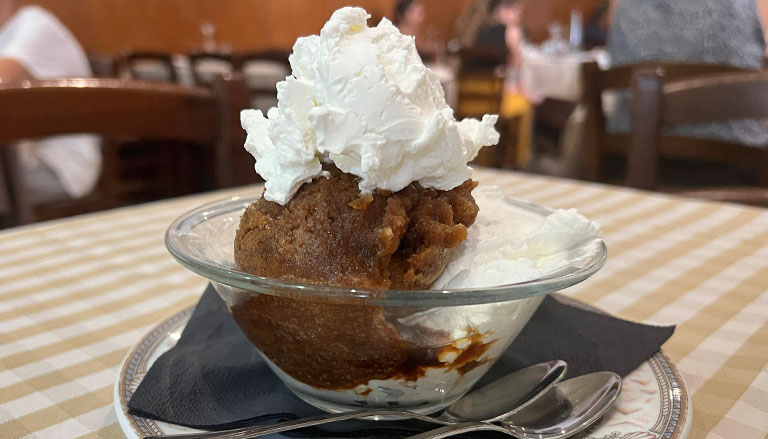
The origins How was coffee granita born and how did it spread? Coffee granita is a refreshing dessert that has its roots in Sicily, but was influenced by the Arab tradition of Sharbat, a flavored frozen drink, prepared with fruit juices, flowers and rose water, which was mixed with snow or ice chopped. Originally, the granita was a very rudimentary preparation, similar to the Roman grattachecca: coarsely crushed and flavored ice. Already in the Middle Ages, in Sicily, there was a key figure: the nivarolo. During the harsh winters, these men collected snow on the mountains, from Etna to the Nebrodi, and then stored it in neviere: real natural refrigerators, dug into the mountains or built with insulating materials. With the arrival of summer, the snow w as transported downstream, especially in the coastal areas, where it was particularly appreciated. There, it was grated to obtain a fine and refreshing granita. Until the early twentieth century, this method was widespread under the name of “rattata” (grattata), who then gave his name to the scratch, a term used in Rome. Around the 16th century, however, a more sophisticated cooling technique was used, introduced from the Arab world. A simple wooden container, the cockpit, was filled with a cooling mixture based on sea salt and snow. In the center, a zinc bucket held a mixture to be frozen. By turning a crank, the mixture was kept moving, helping it to freeze uniformly. With the introduction of coffee to Italy by Venetian traders in the 16th century, the idea of a coffee granita began to make its way among the culinary innovations of the time. Thus, in hot Sicily, where lemon granita was already popular, the idea was born of using coffee as a base for a granita, combining it with sugar and crushed ice, until a grainy but uniform consistency was obtained. The result? An ice-cold drink, perfect for facing hot summer days. Today the granita is served in transparent glasses, often with a generous dose of fresh whipped cream, to make it sweeter and creamier and balance the intense and bitter flavor of the coffee. Diffusion in Italy This dessert began to spread throughout Italy, becoming particularly popular in Rome. The coffee granita appeared on the menus of Roman cafés probably as early as the 18th century, when cafés were meeting places for artists, intellectuals and ordinary citizens. However, it is above all, in the 60s and 70s, that the coffee granita with cream became a symbol of the Roman sweet life, served in historic cafés such as Caffè Greco or Tazza d’Oro, frequented by celebrities and cultural figures . Curiosity: coffee cream vs coffee granita In addition to coffee granita, another similar dessert has become popular in Rome: coffee cream. Unlike granita, coffee cream is denser and velvety, prepared with espresso, sugar and cream, all whipped until it obtains a soft consistency. Although relatively new compared to granita, coffee cream has quickly gained popularity in Rome, becoming a pleasant summer alternative to the classic espresso. Genuine flavors and traditions Let’s face it, typical Roman desserts are characterized by a simplicity that enhances the genuineness of the ingredients and continue to be loved for generations. In addition to the coffee granita, we find the classic Maritozzo with cream, tiramisu, ricotta and sour cherry tart and many others! These desserts, which continue to be prepared and loved in the homes and pastry shops of the city, testify to the attachment to tradition and the pleasure that Romans derive from authentic flavours. Today, enjoying one of these desserts means taking a dive into the past, while savoring the timeless charm of simplicity. Also at Ragno d’Oro you can find a variety of desserts, such as tiramisu, our homemade tarts and cakes, but above all, coffee granita with cream! And what do you choose? The “Granita by Ruggero”, suitable for those who are not afraid to exaggerate, or the “Granita by Ileana”, smallest and lighter? Meanwhile, we are waiting for you in our restaurant, to let you taste the different dishes of the Roman tradition and other delicacies! And remember, every Roman dessert is a small story of flavors and culture.
Typical grandmothers’ cuisine
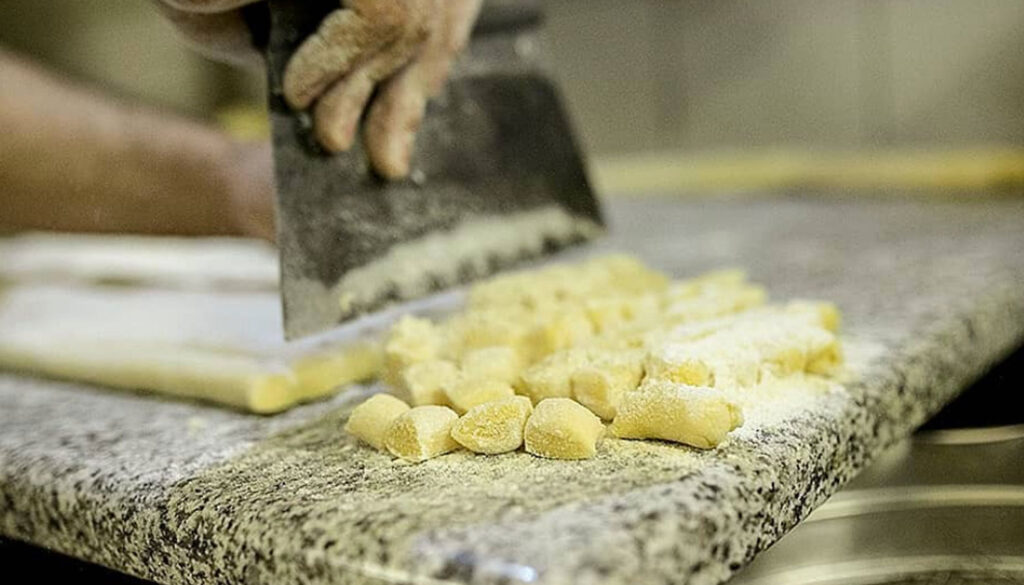
Grandmothers’ cooking is a culinary treasure, a heritage of recipes handed down from generation to generation that embodies love, tradition and family warmth. From rustic and simple dishes to elaborate recipes full of flavours, grandmothers’ cuisine offers a tasteful journey through the history and traditions of each family. In this article, we will explore some of the most iconic dishes of grandmothers’ cuisine, celebrating their authenticity, goodness and ability to transport us back in time with every bite.
